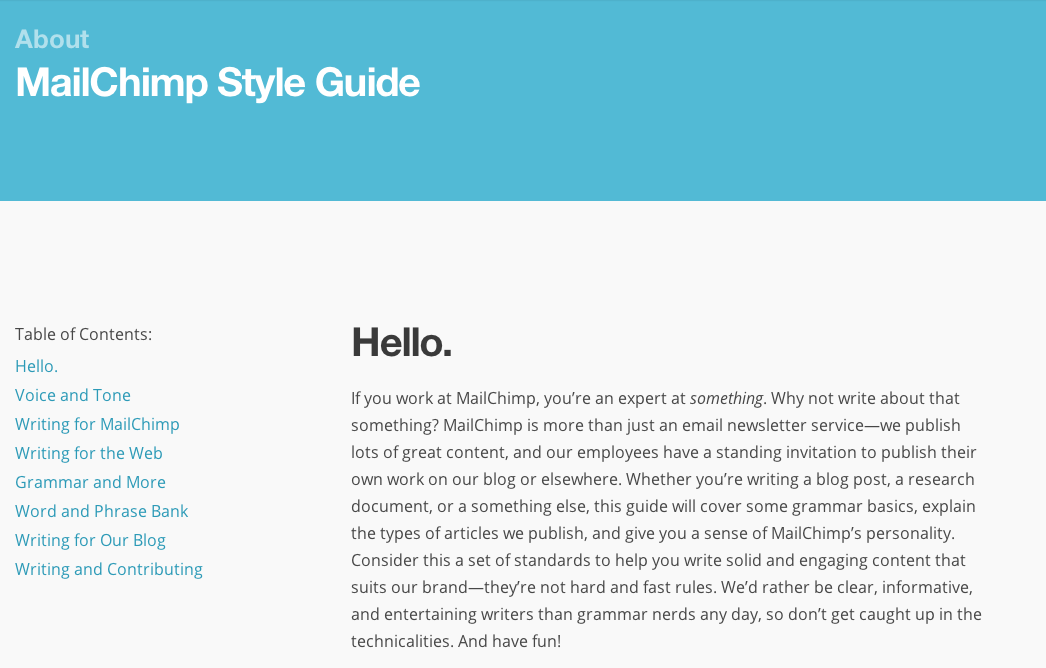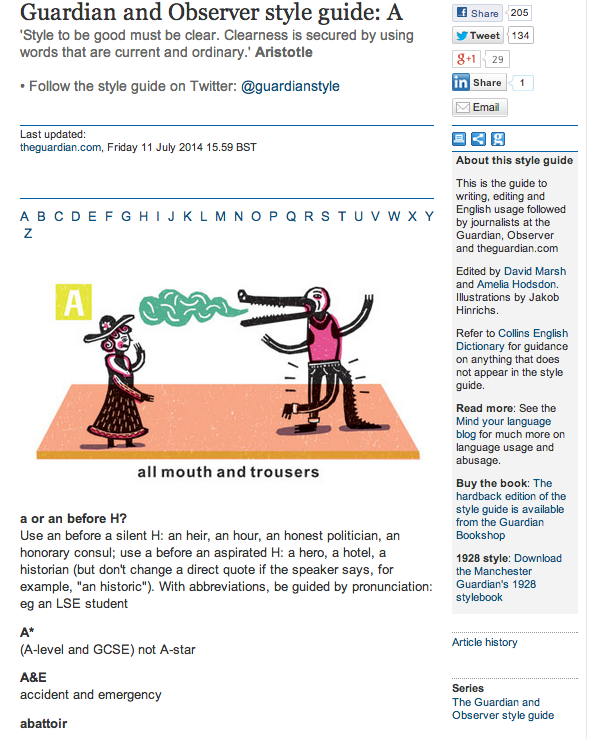The words “style guide” may well bring back shiver-inducing memories of university, bizarre referencing guidelines and the endless horror of formatting restrictions, but in the workplace, a comprehensive and functional style guide can mean the difference between consistently engaging content and a mishmash of business jargon, clichés and errors.
Everyone in an organisation communicates at some level, whether with clients or with colleagues, and a style guide is one of the best ways of ensuring consistency in this communication. It should cover everything from basics such as capitalisation, punctuation and tense, to more complex issues including tone of voice, social media styles and best practice for SEO and metadata.
Obviously, setting up a document that includes all of these considerations sounds like a lot of work — but it doesn’t have to be. Here are some tips for producing a style guide that will produce results without causing too many headaches.
Start with the basics
While, as I mentioned, style guides should be comprehensive documents, that doesn’t mean you need to spend years developing one. Start by talking to the people in your organisation who do most of the copywriting and design work. Find out what issues they often face in terms of consistency across communication and what questions they field from colleagues.
If nothing else, a document that ensures your writing team isn’t getting hammered with the same queries about hyphenating ‘e-mail’ or capitalising ‘internet’ will save you time and your writers’ wrath. This approach can work well; by focusing on recurring issues and building from there instead of trying to craft an overwhelmingly huge document from scratch will mean you’re not wasting time arguing about serial commas and the subjunctive when you could be doing something more important.
A way around this, and a great method to save time on your style guide, is to adopt portions of other organisations’ style guides, particularly if they’re relevant to your industry. Popular choices include The Economist, The Guardian and Observer and The Chicago Manual of Style style guides. Pick one (or maybe two) that suit your organisation and refer to them for basic things such as grammar and punctuation, but make sure that exceptions and alternatives are clear to prevent confusion.
Be specific with tone of voice
Establishing a consistent and appropriate tone of voice is an essential task for any organisation; the tone of voice you decide on will influence:
- how you are perceived in the market
- the approaches you can take to content
- your ability to communicate with various demographics.
It’s important to note that establishing tone of voice isn’t a matter of deciding you want to sound “professional and intelligent” or “conversational and inclusive”, snapping your fingers and making it so. Nobody has the same idea of what “conversational” means, and while these sorts of words provide direction, they should always be supported by specific examples. A handy way to express these sorts of considerations is through a “like this, not like this” table:
Tone: Conversational
- Like this: “Don’t settle for content that doesn’t do the job”
- Not like this: “Your words won’t work if they suck”
Tone: Quirky
- Like this: “Become a SEO super hero with powered up metadata management”
- Not like this: “Failing to consider SEO will make your content harder to find than a vegetarian wolverine with strong moral beliefs about genetically modified foods.”
Tone: Informed
- Like this: “Content management, particularly for businesses, should include keywords and readable web addresses.”
- Not like this: “Your CMS or ECM should be account for SEO and SEF URLS.”
Tone of voice guides are useful because they provide concrete examples and can be tailored to suit your needs, whether that means:
- limiting the use of acronyms and jargon
- ensuring the use of appropriate language
- avoiding particular words and expressions.
Another useful strategy to employ alongside this approach is to identify useful shorthand ways to express your voice; using a celebrity, fictional character or even a competitor’s site can be a handy way to start identifying your organisation’s vibe.
Make examples specific and easy to understand
While many people in your organisation may write, perhaps only a portion of them will have any formal training. Because of this, good practice goes beyond simply including statements such as “we use a serial comma” or “use active not passive voice” and hoping for the best. It’s much more effective to include simple examples that are easy understood and leave little room for confusion.
Examples of a house style guide
Use active not passive voice: write simple, declarative sentences that put the subject first
- Correct: We delivered the brief to the client.
- Incorrect: The brief was delivered to the client by us.
A serial comma is used to separate the final item in a list from the preceding one
- Correct: Breakfast was toast, juice, bacon, and eggs.
- Incorrect: Breakfast was toast, juice, bacon and eggs.
Make it available
To get the most out of your whizz-bang new style guide, make sure it’s easily available and accessible by everyone in the organisation.. An easy way to achieve this is to put your style guide on your website, intranet or file-sharing service.
Many organisations keep their style guides online instead of on paper. This makes them easy to update, access and navigate, and also means they are searchable for specific terms. You can bookmark an online style guide for a swift return, or keep it open in a browser tab while you’re working.
Put someone in charge
A style guide is only as useful to your organisation as it is relevant; that’s why it’s generally a good idea to appoint one or two people to keep it up to date. An evolving and considered style guide will cut down on errors, provide constant guidance for your organisation’s content and ensure that any queries that pop up can be dealt with quickly and consistently.
Having someone in charge can also be useful for settling disputes; I’m not saying that one person should decide everything to do with your content, but there should be a final arbitrator for wrangles over errant commas and punctuation.
This means your style guide manager should be:
- a professional communicator, ideally with formal training
- a good listener with excellent people skills
- able to make sensible decisions under pressure.
Hire a professional
Another option is to hire a consultant or copywriting agent to assist you. They will be able to provide expert guidance on what you should include in your style guide and how it should be implemented — they could even create it for you. As a document that will inform how your organisation positions itself in the market and to customers, it’s integral to get your style guide right, and if your organisation lacks for someone with the necessary expertise, engaging a professional to work with you will make things simpler, clearer and much faster.
Our favourites
Here are a few of our favourite style guides — take a look, they might be just what you need.



What's your style?
As always, we’d love to hear from you. If you’re mad about a style guide, managing one, or making your own, write to us in the comments section below and let us know your thoughts. Has having a style guide saved you time, arguments and errors? If it hasn’t, maybe we can help.



































Internal comms are the lifeblood of your business — here's how to make the most of them.